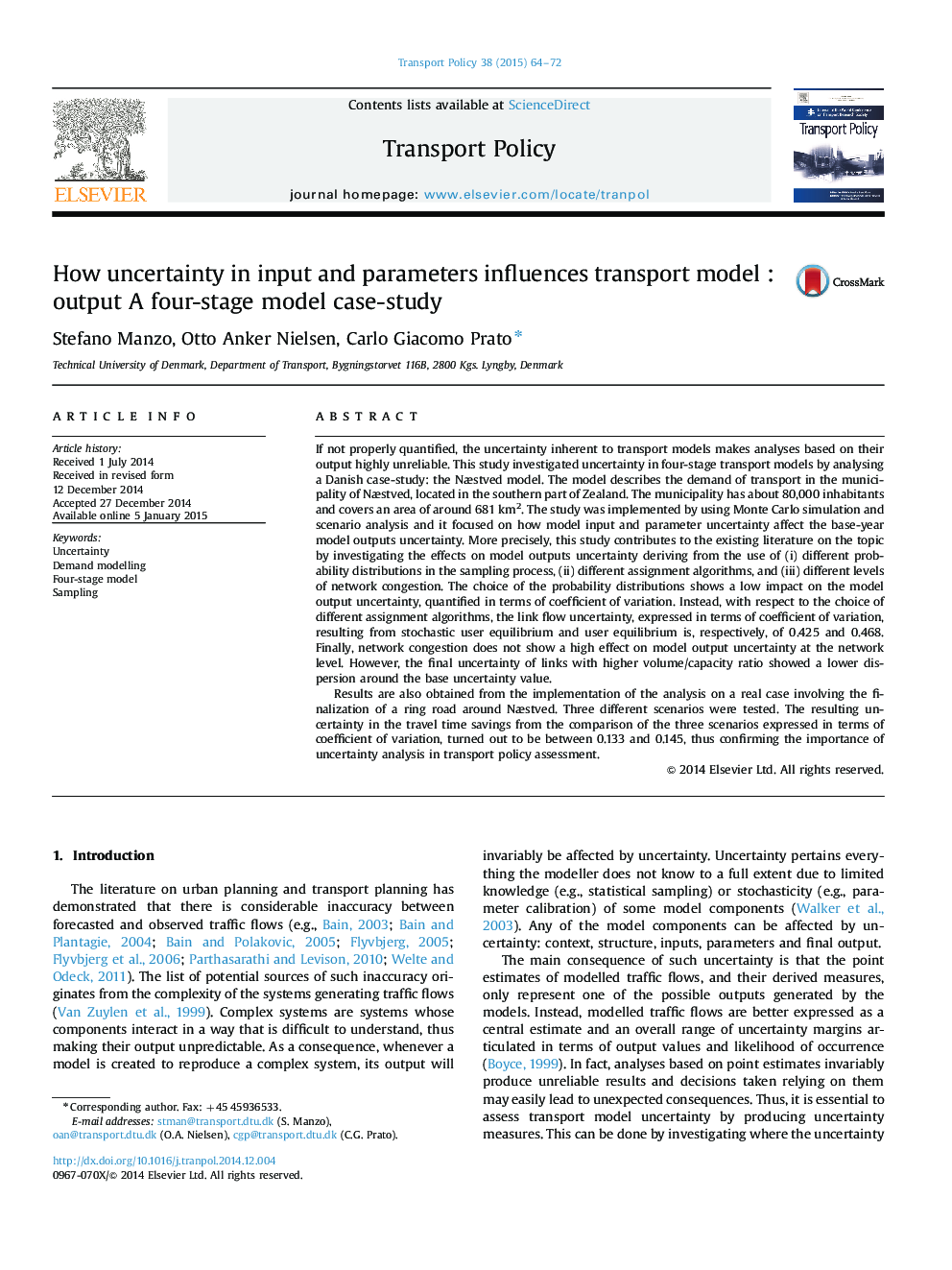| Article ID | Journal | Published Year | Pages | File Type |
|---|---|---|---|---|
| 1064994 | Transport Policy | 2015 | 9 Pages |
•Model uncertainty from different probability distributions in the sampling procedure.•Model uncertainty examined at the link level with variable congestion levels.•Model uncertainty increases in the three initial stages and reduces in the assignment.•SUE reduces final uncertainty more than UE.•The higher the link congestion, the lower the level of uncertainty.
If not properly quantified, the uncertainty inherent to transport models makes analyses based on their output highly unreliable. This study investigated uncertainty in four-stage transport models by analysing a Danish case-study: the Næstved model. The model describes the demand of transport in the municipality of Næstved, located in the southern part of Zealand. The municipality has about 80,000 inhabitants and covers an area of around 681 km2. The study was implemented by using Monte Carlo simulation and scenario analysis and it focused on how model input and parameter uncertainty affect the base-year model outputs uncertainty. More precisely, this study contributes to the existing literature on the topic by investigating the effects on model outputs uncertainty deriving from the use of (i) different probability distributions in the sampling process, (ii) different assignment algorithms, and (iii) different levels of network congestion. The choice of the probability distributions shows a low impact on the model output uncertainty, quantified in terms of coefficient of variation. Instead, with respect to the choice of different assignment algorithms, the link flow uncertainty, expressed in terms of coefficient of variation, resulting from stochastic user equilibrium and user equilibrium is, respectively, of 0.425 and 0.468. Finally, network congestion does not show a high effect on model output uncertainty at the network level. However, the final uncertainty of links with higher volume/capacity ratio showed a lower dispersion around the base uncertainty value.Results are also obtained from the implementation of the analysis on a real case involving the finalization of a ring road around Næstved. Three different scenarios were tested. The resulting uncertainty in the travel time savings from the comparison of the three scenarios expressed in terms of coefficient of variation, turned out to be between 0.133 and 0.145, thus confirming the importance of uncertainty analysis in transport policy assessment.
